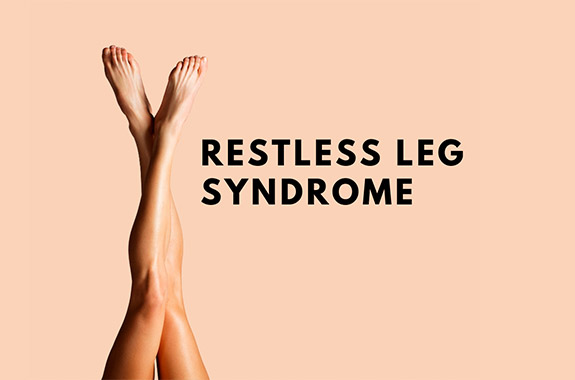
What is restless legs syndrome?
Restless legs syndrome (RLS), also called Willis-Ekbom Disease, causes unpleasant or uncomfortable sensations in the legs and an irresistible urge to move them. Symptoms commonly occur in the late afternoon or evening hours, and are often most severe at night when a person is resting, such as sitting or lying in bed. They also may occur when someone is inactive and sitting for extended periods (for example, when taking a trip by plane or watching a movie). Since symptoms can increase in severity during the night, it could become difficult to fall asleep or return to sleep after waking up. Moving the legs or walking typically relieves the discomfort but the sensations often recur once the movement stops. RLS is classified as a sleep disorder since the symptoms are triggered by resting and attempting to sleep, and as a movement disorder, since people are forced to move their legs in order to relieve symptoms. It is, however, best characterized as a neurological sensory disorder with symptoms that are produced from within the brain itself.
RLS is one of several disorders that can cause exhaustion and daytime sleepiness, which can strongly affect mood, concentration, job and school performance, and personal relationships. Many people with RLS report they are often unable to concentrate, have impaired memory, or fail to accomplish daily tasks. Untreated moderate to severe RLS can lead to about a 20 percent decrease in work productivity and can contribute to depression and anxiety. It also can make traveling difficult.
It is estimated that up to 7-10 percent of the U.S. population may have RLS. RLS occurs in both men and women, although women are more likely to have it than men. It may begin at any age. Many individuals who are severely affected are middle-aged or older, and the symptoms typically become more frequent and last longer with age.
More than 80 percent of people with RLS also experience periodic limb movement of sleep (PLMS). PLMS is characterized by involuntary leg (and sometimes arm) twitching or jerking movements during sleep that typically occur every 15 to 40 seconds, sometimes throughout the night. Although many individuals with RLS also develop PLMS, most people with PLMS do not experience RLS.
Fortunately, most cases of RLS can be treated with non-drug therapies and if necessary, medications.